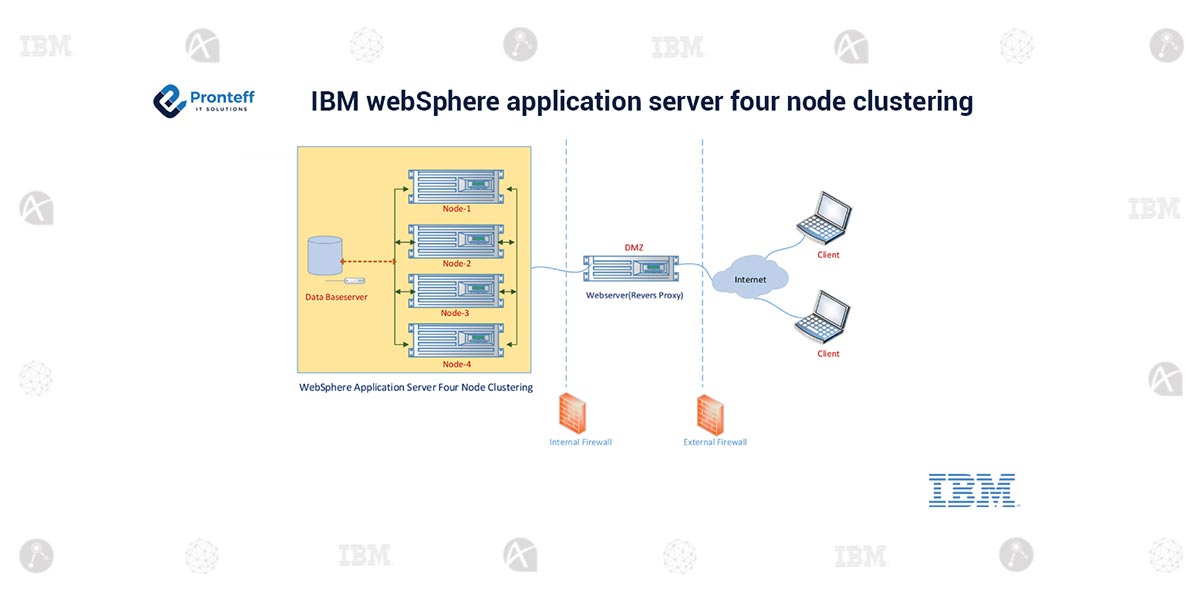IBM webSphere application server four node clustering
A cluster is a group of application servers that collaborate for the purposes of workload balancing and failover.
Benefits:
1. Cluster is virtual unit that groups the Servers
2. Servers are managed together
3. Resources added to the Cluster are propagated to every Server that makes up the cluster
4. Provides high availability, because requests are automatically routed to the running Servers in the event of a failure.
\Components involved:
1. IBM Installation Manager
2. IBM WebSphere application server Network Deployment
3. IBM SDK, Java™ Technology Edition
4. Webserver Reversproxy
1. IBM Installation Manager: The purpose of IBM Installation Manager is to Install/Update/Modify/Rollback/Uninstall the all IBM Software Packages.
2. IBM WebSphere Application Server Network Deployment: WebSphere Application Server Network Deployment provides a flexible, secure server runtime environment for large-scale and mission critical application deployments. It is available on premises or for public, private or hybrid cloud.
3. IBM SDK, Java™ Technology Edition: The IBM implementation of the Java platform is based upon the Java Technology developed by Oracle Corporation. IBM supply two installable packages depending on platform. They are, the Software Developers Kit(SDK) and the Java runtime environment.
4. Webserver (Reverse proxy): Reverse proxy server is a type of proxy server that typically sits behind the firewall in a private network and directs client requests to the appropriate backend server. A reverse proxy server provides an additional level of abstraction and control to ensure the smooth flow of network traffic between client and server.
Examples of Reverse proxy servers: IBM Http server,Ngnix,Apache.





